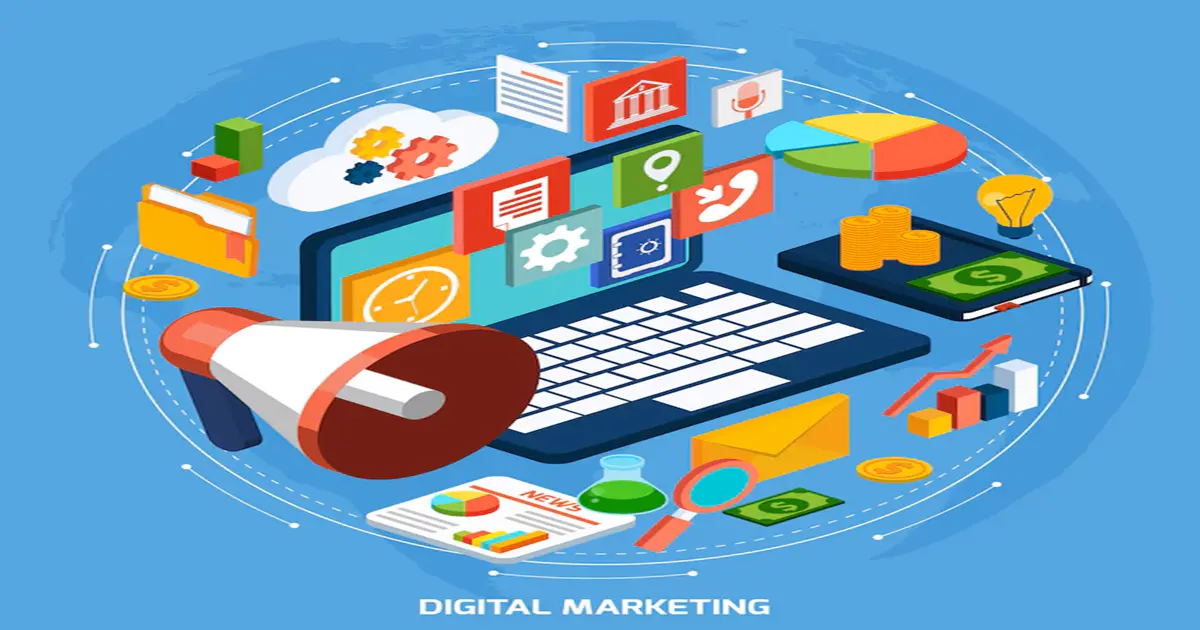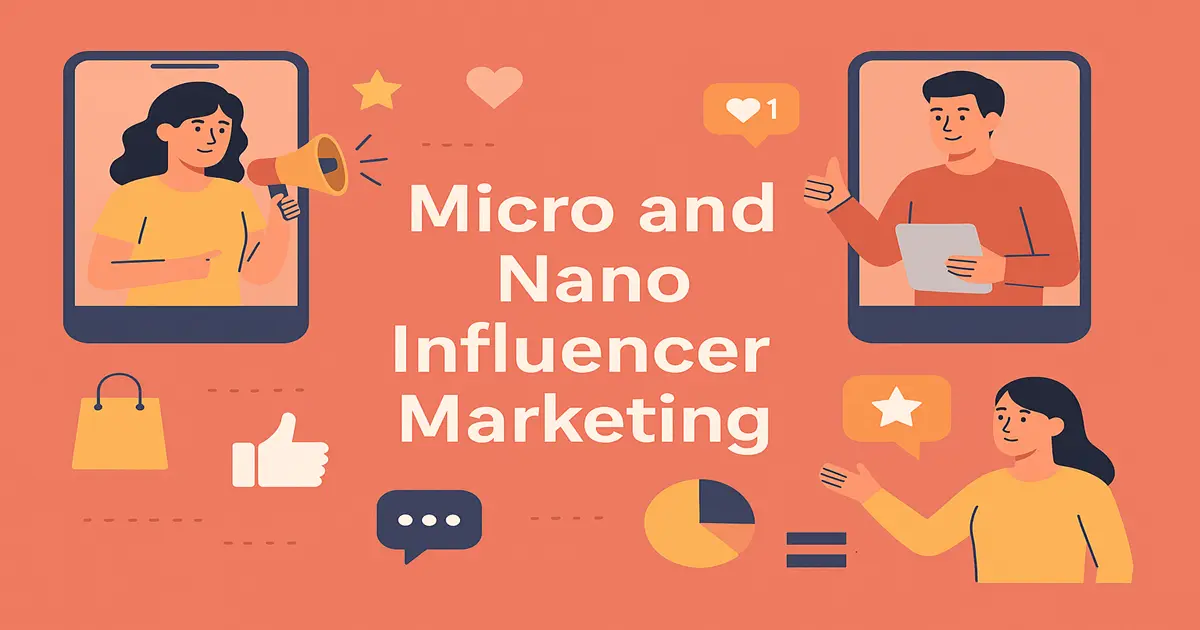Introduction:
In the rapidly evolving digital world, brands are continually seeking new, cost-effective ways to engage with consumers. One effective strategy has emerged as a key component of this marketing revolution: Micro and Nano influencer marketing. Have you observed how conventional advertising no longer has the influence it used to? With ad fatigue, banner blindness, and overall skepticism regarding corporate communications, companies are now moving toward authenticity. And that authenticity is being provided by regular folks with tiny but very active online communities.
So, why is Micro and Nano influencer marketing so attractive? Unlike macro influencers or celebrities, micro (1K-100K followers) and nano (less than 10K followers) influencers possess one superpower: trust. Their audience sees them as peers or a real person, so their endorsement holds much greater value. Their audience might not be huge in number, but the power of their influence can be quite profound, resulting in improved engagement rates, increased conversions, and a higher brand-community bond.
As we jump headfirst into 2025, this marketing strategy is no longer trendy—it’s essential for brands that want to have a meaningful relationship. Whether you’re a small startup or a well-established brand, using the power of Micro and Nano influencer marketing may be the key to unlocking a more genuine connection with your audience. In this blog, we’ll explore what it is, why it matters, its standout features, successful case studies, how to use it effectively, and finally, address common questions. Let’s begin.
What is Micro and Nano Influencer Marketing?
Micro and Nano influencer marketing refers to a type of social media marketing that uses influencers with small, highly targeted followings. Macro influencers and celebrities have millions of followers, while micro influencers have around 1,000 to 100,000 followers, and nano influencers have fewer than 10,000 followers.
What differentiates this category is the one-on-one, sometimes hyper-immersive connection they share with their audience. These influencers are more than content producers—such individuals are viewed as reliable sources of advice among special communities. Since they work in smaller audiences, their content is more conversational than broadcast. This closeness leads to increased engagement, more honest brand presence, and greater consumer confidence.
Nano and micro influencers typically specialize in niche areas like fitness, fashion, travel, parenting, technology, or food, and work with a clearly defined target audience. They tend to be regular consumers who have earned a dedicated following through shared values or experiences, so what they endorse comes across as authentic and genuine.
Micro and Nano influencer marketing isn’t about reaching everyone—it’s about reaching the right ones. And this precision doesn’t conflict with contemporary marketing objectives: personalization, context, and interaction.
This type of marketing can manifest in a range of styles, such as:
- Instagram or TikTok feed and Stories
- YouTube tutorials or reviews
- Blog posts
- Podcast mentions
- Twitter/X tweets or threads
Every partnership can be customized to fit both the influencer’s and the brand’s tone, so that the message is never forced, but organic. With affiliate marketing tools and tracking software, measuring ROI is easier than ever before, and adjusting campaigns in response to real-time results is a breeze.
As consumers increasingly want authentic experiences and are resistant to heavily produced commercials, Micro and Nano influencer marketing is a shining star of authenticity and relevance.
Why Micro and Nano Influencer Marketing Matters
In an online world drowning in content, micro- and nano-influencer marketing is a breath of fresh air. Here are the major reasons why this tactic matters more than ever before:
- Authenticity Rather Than Perfection: Customers increasingly distrust well-groomed brand communication and celebrity endorsements. Micro and nano influencers offer a raw, true, and authentic voice that audiences believe in. Such authenticity inspires stronger engagement.
- Increased Engagement Rates: Industry studies indicate that micro and nano influencers tend to have higher engagement rates than macro influencers. That is because their followers are interested in hearing what they have to say, resulting in comments, shares, and conversions.
- Budget-Friendly Campaigns: Working with smaller influencers costs much less than a celebrity or big influencer. Small businesses and startup companies can have several campaigns for the cost of one print ad.
- Precision Targeting: These influencers specialize in specific niches. If you are launching a vegan skincare product, a nano influencer with a targeted vegan audience can provide higher ROI than a lifestyle celebrity.
- Fosters Community and Loyalty: Micro and nano influencers tend to reply to followers, comment on comments, and create long-term relationships. Brands partnering with these influencers receive that sense of community and loyalty.
- Long-Term Relationships: Small influencers tend to form longer-term collaborations than one-time arrangements, enabling brands to create consistency and more powerful messaging in the long run.
In brief, Micro and Nano influencer marketing is ideally suited to the changing dynamics of contemporary consumer behavior. It focuses on trust, community, and relevance—three principles no brand can afford to neglect.
Features of Micro and Nano Influencer Marketing
What specifically differentiates Micro and Nano influencer marketing from other approaches? These are its distinguishing features:
- Original Content: The content produced tends to be less rehearsed and more real. This results in improved audience acceptance and stronger emotional connections.
- Geographic Targeting: For regional businesses or local campaign targeting, nano influencers are ideal—they tend to have localized followings.
- Variety of Platforms: From Substack newsletters and YouTube vlogs to Twitch streams and Instagram Reels, the flexibility of these influencers enables brands to be seen across a variety of touchpoints.
The power of Micro and Nano influencer marketing is that it can humanize a brand and make it feel personalized, something today’s consumers greatly appreciate.
Case Studies: Micro and Nano Influencer Marketing Success Stories
Case Study 1: Glossier – The Strength of the Everyday Users Glossier, which is famous for its simple design, established its success heavily on the shoulders of micro and nano influencers. Instead of paying celebrities, Glossier spent money on members of a community, casual customers who loved the product. By doing their routines and non-hyper-sexual reviews, such users created wild buzz, fueling sales and loyalty.
Case Study 2: Daniel Wellington – Watch Sales Boom The Daniel Wellington watch company exploded by utilizing thousands of micro influencers all over the world. Rather than spending money on commercials, the company offered products and discount codes to smaller influencers. This created a ripple effect, and the watches became desirable and within reach.
Each of these success stories illustrates how micro-and andnano-influencerr marketing can produce tangible results without a huge media budget.
How to Use Micro and Nano Influencer Marketing Effectively
If you’re now ready to make the plunge into Micro and Nano influencer marketing, here’s how to do it:
- Define Your Goals: Are you looking for brand awareness, lead generation, or direct sales? Well-defined goals will determine the kind of influencers and platforms you need to use.
- Find the Correct Influencers: Utilize platforms such as Upfluence, Heepsy, or even the old-school manual search on Instagram and TikTok to discover influencers who are relevant to your niche and your brand values.
- Begin with Outreach: Send customized messages that indicate you’ve made an effort to know their content. Provide value—be it payment, a complimentary product, or partnership opportunities.
- Create Long-Term Relationships: Emphasize long-term partnerships. This creates long-term credibility with the influencer’s audience.
- Track and Improve: Utilize analytics to measure reach, engagement, and conversions. Adjust your process based on what is effective.
By following these steps, your Micro and Nano influencer marketing campaign will be strategic and effective.
Conclusion:
The change in consumer behavior is evident: consumers trust individuals over brands. Micro and Nano influencer marketing leverages this trust, offering brands an effective, budget-friendly, and authentic method of engaging with their audience.
Whether you’re looking to launch a new product, expand your reach, or simply connect more meaningfully with customers, working with micro and nano influencers offers measurable value. The return on investment isn’t just in numbers—it’s in loyalty, advocacy, and community-building.
As we increasingly enter a digital-first world, we anticipate that micro- and nano-influencer marketing will become increasingly important in strategic planning. Companies that get on board with this now will be well ahead of the game for the future.
FAQs
- What is the difference between nano and micro influencers?
Nano influencers generally have fewer than 10K followers, while micro influencers have between 10K and 100 100K. Both are distinguished by high engagement and niche buyers.
- How much do micro or nano influencers cost to hire?
Prices differ depending on the number of followers, engagement, and type of content. Nano influencers can work for free products, while micro influencers charge anywhere from $50–$500 per post.
- What platforms are best suited for implementing this approach?
Instagram and TikTok are favored options, but YouTube, Twitter, and blogs can also be used, depending on your niche.
- Can micro and nano influencers drive real ROI?
Yes. Most brands see improved engagement and conversions from micro and nano campaigns versus traditional advertising.










